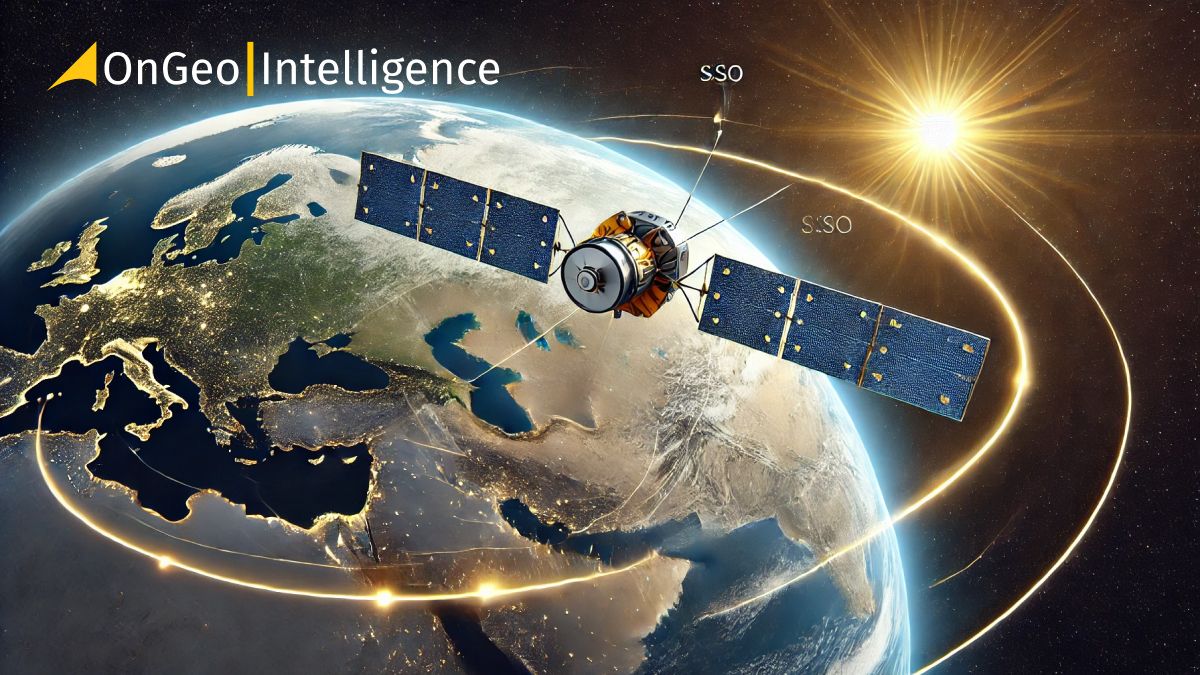Sun-synchronous orbit (SSO): optimal for environmental monitoring
Sun-synchronous orbit (SSO) is a type of polar orbit where the satellite passes over the same spot on Earth at the same local solar time every day. This orbit typically has an altitude of 600 to 800 km and an inclination of 96 to 105 degrees. The satellite's path shifts slightly each day due to Earth’s rotation, allowing it to observe the entire planet over time. The primary feature of this orbit is its consistency in lighting conditions, which is critical for taking images that can be compared over time, such as for monitoring vegetation, weather patterns or urban development.
Because the satellite crosses the same location at the same solar time, scientists can reliably track changes on Earth with minimal differences in lighting. This makes SSOs ideal for environmental monitoring, disaster response and agricultural planning. However, one downside is that these satellites take longer to revisit equatorial areas compared to polar regions due to their high inclination.
Why do most Earth observation
satellites use sun-synchronous orbits?
The predictability of lighting conditions in SSO is the main reason why most EO satellites use this orbit. It enables precise, consistent imaging, which is critical for tasks like climate modeling and tracking deforestation. In disaster management, SSO satellites can provide consistent imagery to detect changes over time, such as flooding, wildfires or storm damage.
Moreover, SSO satellites are placed in low Earth orbit (LEO), allowing them to capture high-resolution images. However, these satellites offer limited coverage in a single pass, requiring a constellation of satellites for continuous global monitoring.
Mid-inclination equatorial orbits: a new alternative
In contrast to SSO, mid-inclination equatorial orbits focus more on covering densely populated mid-latitude regions. Satellites in this orbit do not necessarily follow the Sun, so lighting conditions can vary, but their advantage lies in their ability to frequently revisit the same location multiple times per day.
The Maxar WorldView Legion constellation is an example of this approach. Operating at an altitude of 450 km, it provides coverage from dawn to dusk with up to 15 revisits per day. This orbit’s lower inclination allows the satellite to focus on regions of high interest, offering better temporal resolution (how often an area is imaged), which is critical for real-time monitoring.
WorldView Legion, designed to operate in mid-inclination orbits, exemplifies the advantages of this alternative to SSO. With frequent revisits and an ability to cover high-priority regions more often, it offers better support for critical tasks such as emergency response, infrastructure monitoring and mission planning.
The unique case of indonesia and equatorial regions
Indonesia, situated along the equator, presents a unique case for Earth observation. In the presentation by UNOOSA, equatorial EO satellites are seen as crucial for monitoring environmental issues such as deforestation, disaster management, and agricultural development in the region. Since Indonesia is not optimally covered by traditional SSOs due to the orbit’s longer revisit time for equatorial regions, mid-inclination equatorial orbits provide a more effective solution. These orbits allow for more frequent imaging, which is critical in rapidly changing environments like tropical forests or coastal areas prone to flooding.
While Sun-Synchronous Orbits are very typical for Earth observation due to their consistent lighting conditions, emerging alternatives like mid-inclination equatorial orbits are gaining attention. These orbits offer higher revisit rates over specific regions, making them ideal for countries like Indonesia that need frequent, high-quality data for environmental monitoring and disaster management. The evolution of EO satellite deployment strategies reflects the growing need for versatile and responsive systems like Maxar’s WorldView Legion, which can offer better coverage for equatorial and mid-latitude regions.
Conclusion: the versatility of Earth
observation satellite orbits
Sun-Synchronous Orbits (SSO) have long been the standard for Earth observation due to their consistent lighting and global coverage, emerging alternatives like mid-inclination equatorial orbits provide crucial advantages in specific scenarios. Whether it's the precise environmental monitoring provided by SSOs or the frequent revisits offered by mid-inclination orbits, the choice of orbit is essential to addressing different Earth observation needs. As technology advances, the flexibility of satellite orbits will continue to evolve, ensuring better coverage and more reliable data for critical applications around the globe.















































